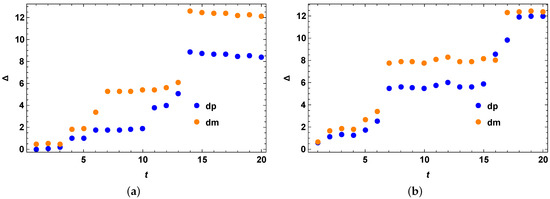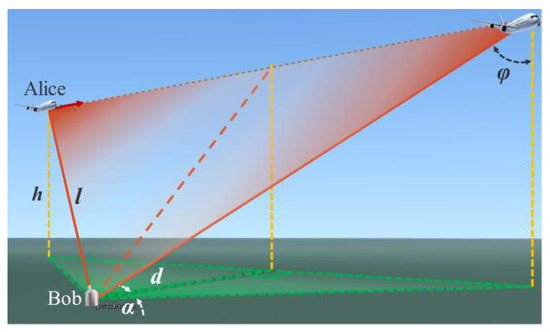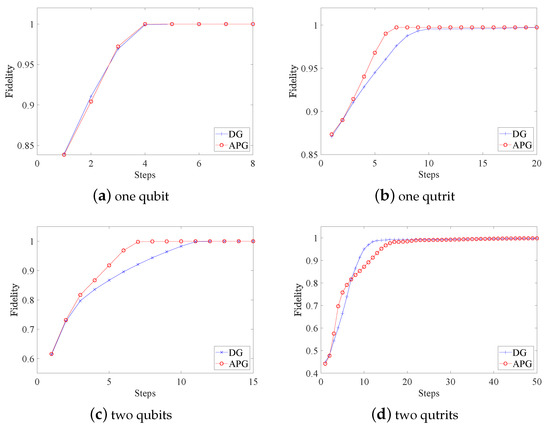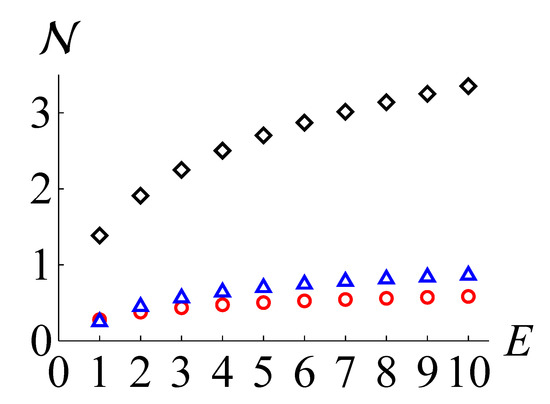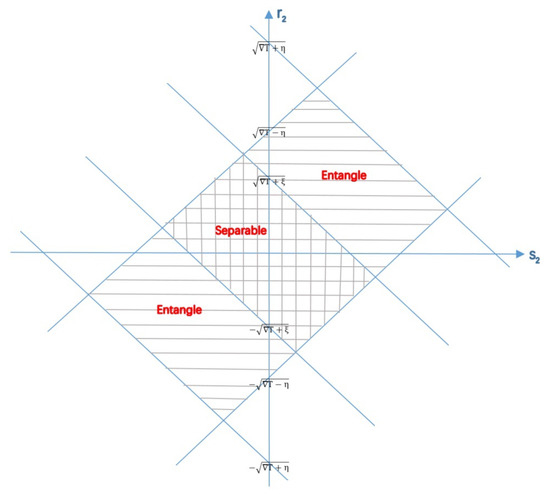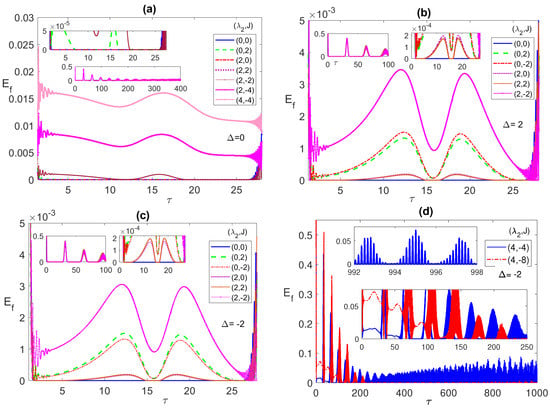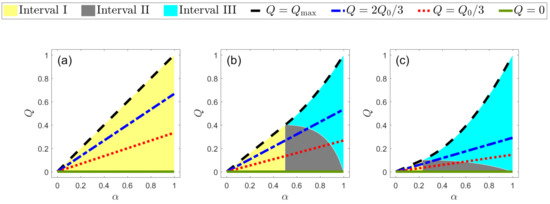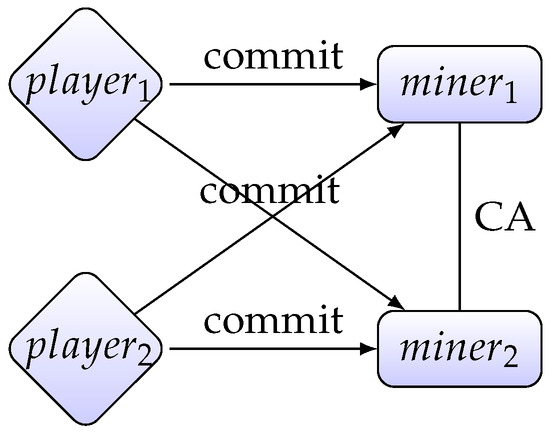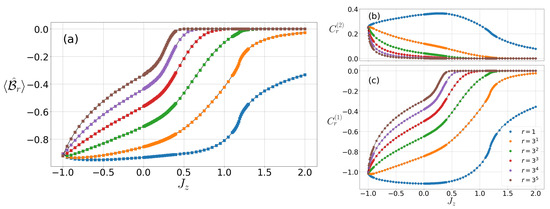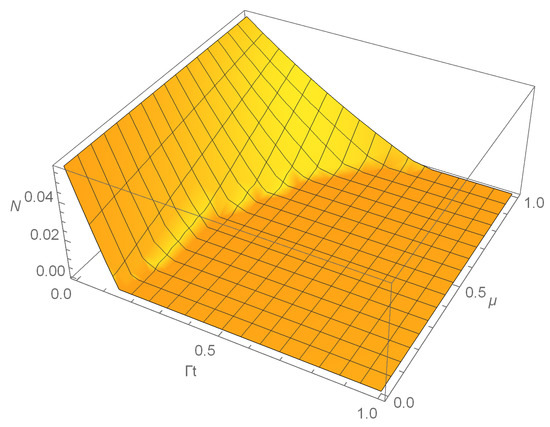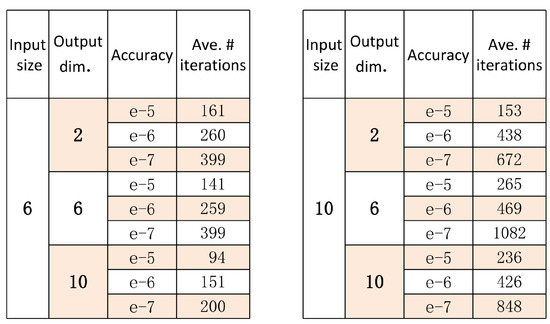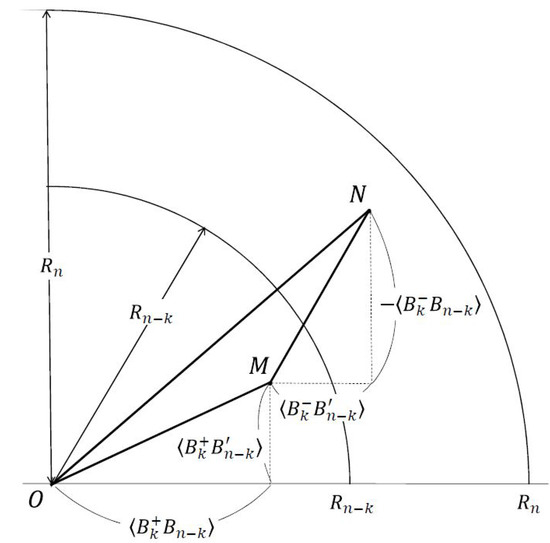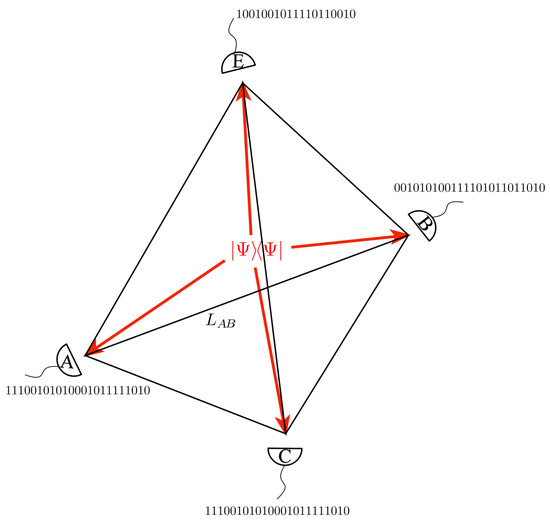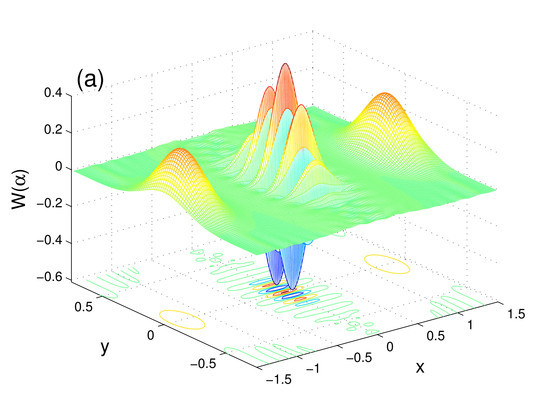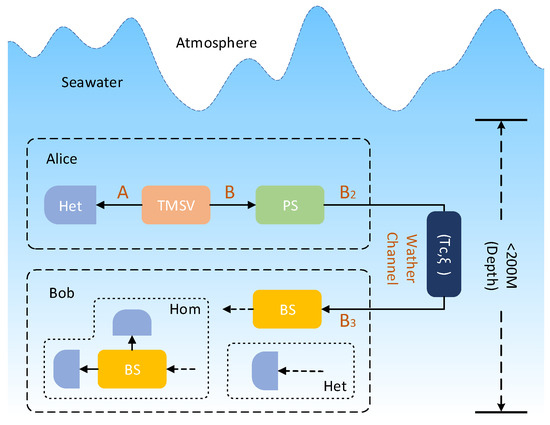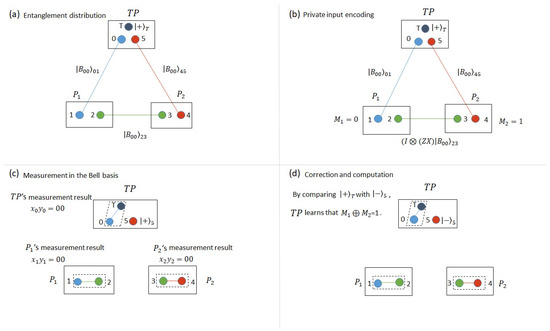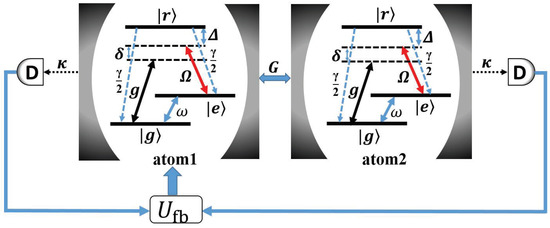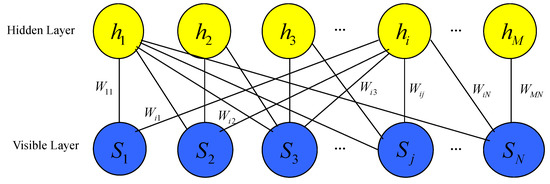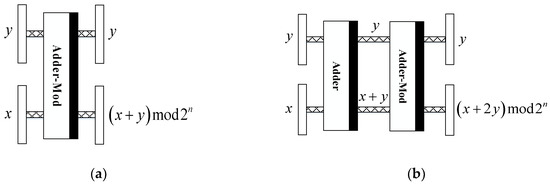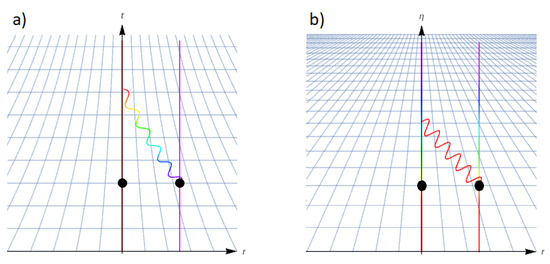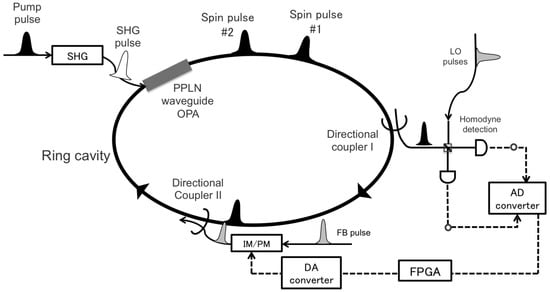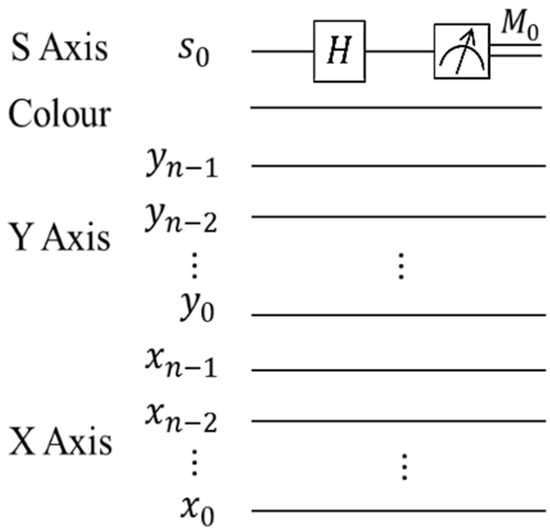Quantum Information
Share This Topical Collection
Editor
 Prof. Dr. Rosario Lo Franco
Prof. Dr. Rosario Lo Franco
 Prof. Dr. Rosario Lo Franco
Prof. Dr. Rosario Lo Franco
E-Mail
Website
Collection Editor
Dipartimento di Ingegneria, Università degli Studi di Palermo, Viale delle Scienze, Edificio 6, 90128 Palermo, Italy
Interests: quantum correlations; entanglement; open quantum systems; quantum information; foundations of quantum mechanics; identical quantum particles
Special Issues, Collections and Topics in MDPI journals
Topical Collection Information
Dear Colleagues,
Entropy is eager to launch a special collection on quantum information, which will build on the success of the recent Special Issue on this topic. We expect that the journal will provide a niche for investigators working at the interface of quantum information with other subjects in which information and entropy are of particular interest. Such subjects are found within broader disciplines ranging from biology, through quantum chemistry and many-body physics, to general relativity. In addition to the many fascinating ways in which quantum coherence and quantum entanglement are manifested in material systems, there are also compelling foundational issues involving the relationships among quantum mechanics, information, thermodynamics, statistical mechanics, relativity, and space-time itself. What principles are primary, and what is derived? Does one have a choice? What are the most interesting open questions?
Prof. Dr. Rosario Lo Franco
Collection Editor
Manuscript Submission Information
Manuscripts for the topical collection can be submitted online at www.mdpi.com by registering and logging in to this website. Once you are registered, click here to go to the submission form. All papers will be peer-reviewed. Accepted papers will be published continuously in the journal (as soon as accepted) and will be listed together on this website. The topical collection considers regular research articles, short communications and review articles. A guide for authors and other relevant information for submission of manuscripts is available on the Instructions for Authors page.
Please visit the Instructions for Authors page before submitting a manuscript. The article processing charge (APC) for publication in this open access journal is 2600 CHF (Swiss Francs).
Published Papers (27 papers)
Open AccessArticle
Stronger Quantum Speed Limit for Mixed Quantum States
by
Shrobona Bagchi, Dimpi Thakuria and Arun Kumar Pati
Cited by 1 | Viewed by 1143
Abstract
In this paper, we derive a quantum speed limit for unitary evolution for the case of mixed quantum states using the stronger uncertainty relation for mixed quantum states. This bound can be optimized over different choices of Hermitian operators for a better bound.
[...] Read more.
In this paper, we derive a quantum speed limit for unitary evolution for the case of mixed quantum states using the stronger uncertainty relation for mixed quantum states. This bound can be optimized over different choices of Hermitian operators for a better bound. We illustrate this with some examples and show its better performance with respect to three existing bounds for mixed quantum states.
Full article
►▼
Show Figures
Open AccessArticle
Airborne Quantum Key Distribution Performance Analysis under Supersonic Boundary Layer
by
Huicun Yu, Bangying Tang, Haolin Ding, Yang Xue, Jie Tang, Xingyu Wang, Bo Liu and Lei Shi
Cited by 1 | Viewed by 1186
Abstract
Airborne quantum key distribution (QKD) that can synergize with terrestrial networks and quantum satellite nodes is expected to provide flexible and relay links for the large-scale integrated communication network. However, the photon transmission rate would be randomly reduced, owing to the random distributed
[...] Read more.
Airborne quantum key distribution (QKD) that can synergize with terrestrial networks and quantum satellite nodes is expected to provide flexible and relay links for the large-scale integrated communication network. However, the photon transmission rate would be randomly reduced, owing to the random distributed boundary layer that surrounding to the surface of the aircraft when the flight speed larger than Mach 0.3. Here, we investigate the airborne QKD performance with the BL effects. Furthermore, we take experimental data of supersonic BL into the model and compare the airborne QKD performance under different conditions. Simulation results show that, owing to the complex small-scale turbulence structures in the supersonic boundary layer, the deflection angle and correspondingly drifted offset of the beam varied obviously and randomly, and the distribution probability of photons are redistributed. And the subsonic and supersonic boundary layer would decrease ~35.8% and ~62.5% of the secure key rate respectively. Our work provides a theoretical guidance towards a possible realization of high-speed airborne QKD.
Full article
►▼
Show Figures
Open AccessArticle
Reliable Optimization of Arbitrary Functions over Quantum Measurements
by
Jing Luo and Jiangwei Shang
Viewed by 899
Abstract
As the connection between classical and quantum worlds, quantum measurements play a unique role in the era of quantum information processing. Given an arbitrary function of quantum measurements, how to obtain its optimal value is often considered as a basic yet important problem
[...] Read more.
As the connection between classical and quantum worlds, quantum measurements play a unique role in the era of quantum information processing. Given an arbitrary function of quantum measurements, how to obtain its optimal value is often considered as a basic yet important problem in various applications. Typical examples include but are not limited to optimizing the likelihood functions in quantum measurement tomography, searching the Bell parameters in Bell-test experiments, and calculating the capacities of quantum channels. In this work, we propose reliable algorithms for optimizing arbitrary functions over the space of quantum measurements by combining the so-called Gilbert’s algorithm for convex optimization with certain gradient algorithms. With extensive applications, we demonstrate the efficacy of our algorithms with both convex and nonconvex functions.
Full article
►▼
Show Figures
Open AccessArticle
Separability Criteria Based on the Weyl Operators
by
Xiaofen Huang, Tinggui Zhang, Ming-Jing Zhao and Naihuan Jing
Cited by 1 | Viewed by 1213
Abstract
Entanglement as a vital resource for information processing can be described by special properties of the quantum state. Using the well-known Weyl basis we propose a new Bloch decomposition of the quantum state and study its separability problem. This decomposition enables us to
[...] Read more.
Entanglement as a vital resource for information processing can be described by special properties of the quantum state. Using the well-known Weyl basis we propose a new Bloch decomposition of the quantum state and study its separability problem. This decomposition enables us to find an alternative characterization of the separability based on the correlation matrix. We show that the criterion is effective in detecting entanglement for the isotropic states, Bell-diagonal states and some PPT entangled states. We also use the Weyl operators to construct an detecting operator for quantum teleportation.
Full article
Open AccessArticle
Estimating Non-Gaussianity of a Quantum State by Measuring Orthogonal Quadratures
by
Jiyong Park
Cited by 2 | Viewed by 3236
Abstract
We derive the lower bounds for a non-Gaussianity measure based on quantum relative entropy (QRE). Our approach draws on the observation that the QRE-based non-Gaussianity measure of a single-mode quantum state is lower bounded by a function of the negentropies for quadrature distributions
[...] Read more.
We derive the lower bounds for a non-Gaussianity measure based on quantum relative entropy (QRE). Our approach draws on the observation that the QRE-based non-Gaussianity measure of a single-mode quantum state is lower bounded by a function of the negentropies for quadrature distributions with maximum and minimum variances. We demonstrate that the lower bound can outperform the previously proposed bound by the negentropy of a quadrature distribution. Furthermore, we extend our method to establish lower bounds for the QRE-based non-Gaussianity measure of a multimode quantum state that can be measured by homodyne detection, with or without leveraging a Gaussian unitary operation. Finally, we explore how our lower bound finds application in non-Gaussian entanglement detection.
Full article
►▼
Show Figures
Open AccessArticle
Local Information as an Essential Factor for Quantum Entanglement
by
Zhaofeng Su
Viewed by 1720
Abstract
Quantum entanglement is not only a fundamental concept in quantum mechanics but also a special resource for many important quantum information processing tasks. An intuitive way to understand quantum entanglement is to analyze its geometric parameters which include local parameters and correlation parameters.
[...] Read more.
Quantum entanglement is not only a fundamental concept in quantum mechanics but also a special resource for many important quantum information processing tasks. An intuitive way to understand quantum entanglement is to analyze its geometric parameters which include local parameters and correlation parameters. The correlation parameters have been extensively studied while the role of local parameters have not been drawn attention. In this paper, we investigate the question how local parameters of a two-qubit system affect quantum entanglement in both quantitative and qualitative perspective. Firstly, we find that the concurrence, a measure of quantum entanglement, of a general two-qubit state is bounded by the norms of local vectors and correlations matrix. Then, we derive a sufficient condition for a two-qubit being separable in perspective of local parameters. Finally, we find that different local parameters could make a state with fixed correlation matrix separable, entangled or even more qualitatively entangled than the one with vanished local parameters.
Full article
►▼
Show Figures
Open AccessArticle
Asymptotic Entanglement Sudden Death in Two Atoms with Dipole–Dipole and Ising Interactions Coupled to a Radiation Field at Non-Zero Detuning
by
Gehad Sadiek, Wiam Al-Dress, Salwa Shaglel and Hala Elhag
Cited by 4 | Viewed by 2095
Abstract
We investigate the time evolution and asymptotic behavior of a system of two two-level atoms (qubits) interacting off-resonance with a single mode radiation field. The two atoms are coupled to each other through dipole–dipole as well as Ising interactions. An exact analytic solution
[...] Read more.
We investigate the time evolution and asymptotic behavior of a system of two two-level atoms (qubits) interacting off-resonance with a single mode radiation field. The two atoms are coupled to each other through dipole–dipole as well as Ising interactions. An exact analytic solution for the system dynamics that spans the entire phase space is provided. We focus on initial states that cause the system to evolve to entanglement sudden death (ESD) between the two atoms. We find that combining the Ising and dipole–dipole interactions is very powerful in controlling the entanglement dynamics and ESD compared with either one of them separately. Their effects on eliminating ESD may add up constructively or destructively depending on the type of Ising interaction (Ferromagnetic or anti-Ferromagnetic), the detuning parameter value, and the initial state of the system. The asymptotic behavior of the ESD is found to depend substantially on the initial state of the system, where ESD can be entirely eliminated by tuning the system parameters except in the case of an initial correlated Bell state. Interestingly, the entanglement, atomic population and quantum correlation between the two atoms and the field synchronize and reach asymptotically quasi-steady dynamic states. Each one of them ends up as a continuous irregular oscillation, where the collapse periods vanish, with a limited amplitude and an approximately constant mean value that depend on the initial state and the system parameters choice. This indicates an asymptotic continuous exchange of energy (and strong quantum correlation) between the atoms and the field takes place, accompanied by diminished ESD for these chosen setups of the system. This system can be realized in spin states of quantum dots or Rydberg atoms in optical cavities, and superconducting or hybrid qubits in linear resonators.
Full article
►▼
Show Figures
Open AccessArticle
Mutual Information and Quantum Discord in Quantum State Discrimination with a Fixed Rate of Inconclusive Outcomes
by
Omar Jiménez, Miguel Angel Solís–Prosser, Leonardo Neves and Aldo Delgado
Cited by 4 | Viewed by 2537
Abstract
We studied the mutual information and quantum discord that Alice and Bob share when Bob implements a discrimination with a fixed rate of inconclusive outcomes (FRIO) onto two pure non-orthogonal quantum states, generated with arbitrary a priori probabilities. FRIO discrimination interpolates between minimum
[...] Read more.
We studied the mutual information and quantum discord that Alice and Bob share when Bob implements a discrimination with a fixed rate of inconclusive outcomes (FRIO) onto two pure non-orthogonal quantum states, generated with arbitrary a priori probabilities. FRIO discrimination interpolates between minimum error (ME) and unambiguous state discrimination (UD). ME and UD are well known discrimination protocols with several applications in quantum information theory. FRIO discrimination provides a more general framework where the discrimination process together with its applications can be studied. In this setting, we compared the performance of optimum probability of discrimination, mutual information, and quantum discord. We found that the accessible information is obtained when Bob implements the ME strategy. The most (least) efficient discrimination scheme is ME (UD), from the point of view of correlations that are lost in the initial state and remain in the final state, after Bob’s measurement.
Full article
►▼
Show Figures
Open AccessArticle
Lottery and Auction on Quantum Blockchain
by
Xin Sun, Piotr Kulicki and Mirek Sopek
Cited by 7 | Viewed by 3089
Abstract
This paper proposes a protocol for lottery and a protocol for auction on quantum Blockchain. Our protocol of lottery satisfies randomness, unpredictability, unforgeability, verifiability, decentralization and unconditional security. Our protocol of auction satisfies bid privacy, posterior privacy, bids’ binding, decentralization and unconditional security.
[...] Read more.
This paper proposes a protocol for lottery and a protocol for auction on quantum Blockchain. Our protocol of lottery satisfies randomness, unpredictability, unforgeability, verifiability, decentralization and unconditional security. Our protocol of auction satisfies bid privacy, posterior privacy, bids’ binding, decentralization and unconditional security. Except quantum Blockchain, the main technique involved in both protocols is quantum bit commitment.
Full article
►▼
Show Figures
Open AccessArticle
Bell-Type Correlation at Quantum Phase Transitions in Spin-1 Chain
by
Dongkeun Lee and Wonmin Son
Cited by 2 | Viewed by 1821
Abstract
For the identification of non-trivial quantum phase, we exploit a Bell-type correlation that is applied to the one-dimensional spin-1 XXZ chain. It is found that our generalization of bipartite Bell correlation can take a decomposed form of transverse spin correlation together with high-order
[...] Read more.
For the identification of non-trivial quantum phase, we exploit a Bell-type correlation that is applied to the one-dimensional spin-1 XXZ chain. It is found that our generalization of bipartite Bell correlation can take a decomposed form of transverse spin correlation together with high-order terms. The formulation of the density-matrix renormalisation group is utilized to obtain the ground state of a given Hamiltonian with non-trivial phase. Subsequently Bell-type correlation is evaluated through the analysis of the matrix product state. Diverse classes of quantum phase transitions in the spin-1 model are identified precisely through the evaluation of the first and the second moments of the generalized Bell correlations. The role of high-order terms in the criticality has been identified and their physical implications for the quantum phase have been revealed.
Full article
►▼
Show Figures
Open AccessArticle
Entropic Uncertainty in Spin XY Model with Long-Range Interactions
by
Nour Zidan
Cited by 14 | Viewed by 2191
Abstract
The behavior of the uncertainty relations and their tightness for a system, consisting of two qubits interacting thermally with a magnetic field in the presence of Dzyaloshinskii–Moriya interaction, is discussed, where different types of interaction strengths are considered. It is shown that both
[...] Read more.
The behavior of the uncertainty relations and their tightness for a system, consisting of two qubits interacting thermally with a magnetic field in the presence of Dzyaloshinskii–Moriya interaction, is discussed, where different types of interaction strengths are considered. It is shown that both coupling and the magnetic field parameters decay the degree of entanglement, and increasing the uncertainty relations and the degree of mixedness. The phenomena of the sudden changes in the investigated quantities are depicted at large values of the field and coupling parameters. Concerning the type of the coupling parameters, distance and the trigonometric coupling have a clear effect on the behavior of the studied physical quantities.
Full article
►▼
Show Figures
Open AccessArticle
Postponing Distillability Sudden Death in a Correlated Dephasing Channel
by
Guanghao Xue and Liang Qiu
Cited by 4 | Viewed by 1911
Abstract
We investigated the dynamics of a two-qutrit system in a correlated quantum channel. The partial correlations between consecutive actions of the channel can effectively postpone the phenomenon of distillability sudden death (DSD) and broaden the range of the time cutoff that indicates entanglement
[...] Read more.
We investigated the dynamics of a two-qutrit system in a correlated quantum channel. The partial correlations between consecutive actions of the channel can effectively postpone the phenomenon of distillability sudden death (DSD) and broaden the range of the time cutoff that indicates entanglement of the positive partial transpose states. Particularly, the negativity of the system will revive and DSD will disappear in the fully correlated channel.
Full article
►▼
Show Figures
Open AccessArticle
Computing Classical-Quantum Channel Capacity Using Blahut–Arimoto Type Algorithm: A Theoretical and Numerical Analysis
by
Haobo Li and Ning Cai
Viewed by 2859
Abstract
Based on Arimoto’s work in 1972, we propose an iterative algorithm for computing the capacity of a discrete memoryless classical-quantum channel with a finite input alphabet and a finite dimensional output, which we call the Blahut–Arimoto algorithm for classical-quantum channel, and an input
[...] Read more.
Based on Arimoto’s work in 1972, we propose an iterative algorithm for computing the capacity of a discrete memoryless classical-quantum channel with a finite input alphabet and a finite dimensional output, which we call the Blahut–Arimoto algorithm for classical-quantum channel, and an input cost constraint is considered. We show that, to reach
accuracy, the iteration complexity of the algorithm is upper bounded by
where
n is the size of the input alphabet. In particular, when the output state
is linearly independent in complex matrix space, the algorithm has a geometric convergence. We also show that the algorithm reaches an
accurate solution with a complexity of
, and
in the special case, where
m is the output dimension,
is the relative entropy of two distributions, and
is a positive number. Numerical experiments were performed and an approximate solution for the binary two-dimensional case was analysed.
Full article
►▼
Show Figures
Open AccessArticle
Exploring Multipartite Steering Effect Using Bell Operators
by
Li-Yi Hsu and Shoichi Kawamoto
Viewed by 2246
Abstract
While Bell operators are exploited in detecting Bell nonlocality and entanglement classification, we demonstrate their usefulness in exploring Einstein–Podolsky–Rosen (EPR) steering, which represents the quantum correlation intermediate between entanglement and Bell nonlocality. We propose a task function that detects steerability of multi-qubit states
[...] Read more.
While Bell operators are exploited in detecting Bell nonlocality and entanglement classification, we demonstrate their usefulness in exploring Einstein–Podolsky–Rosen (EPR) steering, which represents the quantum correlation intermediate between entanglement and Bell nonlocality. We propose a task function that detects steerability of multi-qubit states in bipartite scenarios. A novel necessary and sufficient steering criterion is based on the superposition of the recursive Bell operators which are often employed for detecting Bell nonlocality. Utilizing the task function we can (i) reveal the one-to-one mapping relation between joint measurability and unsteerability, (ii) geometrically depict and compare the entanglement classification and the steering criteria and propose a geometrical measure, and (iii) compare the EPR steering with Bell nonlocality using an alternative task function. We extend the result to detect EPR steering for multi-qutrit cases and some numerical results are illustrated as examples. Finally, the steering criteria in a star-shaped quantum network is studied to see how the result is applied to a genuine multipartite steering case.
Full article
►▼
Show Figures
Open AccessArticle
Quantum Reactivity: An Indicator of Quantum Correlation
by
Shahabeddin M. Aslmarand, Warner A. Miller, Verinder S. Rana and Paul M. Alsing
Cited by 3 | Viewed by 2756
Abstract
Geometry is often a valuable guide to complex problems in physics. In this paper, we introduce a novel geometric quantity called quantum reactivity (QR) to probe quantum correlations in higher-dimensional quantum systems. Much like quantum discord, QR is not a measure of quantum
[...] Read more.
Geometry is often a valuable guide to complex problems in physics. In this paper, we introduce a novel geometric quantity called quantum reactivity (QR) to probe quantum correlations in higher-dimensional quantum systems. Much like quantum discord, QR is not a measure of quantum entanglement but can be useful in quantum information processes where a notion of quantum correlation in higher dimensions is needed. Both quantum discord and QR are extendable to an arbitrarily large number of qubits; however, unlike discord, QR satisfies the invariance under unitary operations. Our approach parallels Schumacher’s singlet state triangle inequality, which used an information geometry-based entropic distance. We use a generalization of information distance to area, volume, and higher-dimensional volumes and then use these to define a quantity that we call QR, which is the familiar ratio of surface area to volume. We examine a spectrum of multipartite states (Werner, W, GHZ, randomly generated density matrices, etc.) and demonstrate that QR can provide an ordering of these quantum states as to their degree of quantum correlation.
Full article
►▼
Show Figures
Open AccessArticle
Influence of the Coupling between Two Qubits in an Open Coherent Cavity: Nonclassical Information via Quasi-Probability Distributions
by
Abdel-Baset A. Mohamed, Hichem Eleuch and Abdel-Shafy F. Obada
Cited by 5 | Viewed by 2025
Abstract
In this paper, we investigate the dynamics of two coupled two-level systems (or qubits) that are resonantly interacting with a microwave cavity. We examine the effects of the intrinsic decoherence rate and the coupling between the two qubits on the non-classicality of different
[...] Read more.
In this paper, we investigate the dynamics of two coupled two-level systems (or qubits) that are resonantly interacting with a microwave cavity. We examine the effects of the intrinsic decoherence rate and the coupling between the two qubits on the non-classicality of different system partitions via quasi-probability functions. New definitions for the partial Q-function and its Wehrl entropy are used to investigate the information and the quantum coherence of the phase space. The amount of the quantum coherence and non-classicality can be appropriately tuned by suitably adopting the rates of the intrinsic-decoherence and the coupling between the two qubits. The intrinsic decoherence has a pronounced effect on the negativity and the positivity of the Wigner function. The coupling between the two qubits can control the negativity and positivity of the quasi-probability functions.
Full article
►▼
Show Figures
Open AccessArticle
Performance Improvement of Underwater Continuous-Variable Quantum Key Distribution via Photon Subtraction
by
Qingquan Peng, Guojun Chen, Xuan Li, Qin Liao and Ying Guo
Cited by 12 | Viewed by 2783
Abstract
Considering the ocean water’s optical attenuation is significantly larger than that of Fiber Channel, we propose an approach to enhance the security of underwater continuous-variable quantum key distribution (CVQKD). In particular, the photon subtraction operation is performed at the emitter to enhance quantum
[...] Read more.
Considering the ocean water’s optical attenuation is significantly larger than that of Fiber Channel, we propose an approach to enhance the security of underwater continuous-variable quantum key distribution (CVQKD). In particular, the photon subtraction operation is performed at the emitter to enhance quantum entanglement, thereby improving the underwater transmission performance of the CVQKD. Simulation results show that the photon subtraction operation can effectively improve the performance of CVQKD in terms of underwater transmission distance. We also compare the performance of the proposed protocol in different water qualities, which shows the advantage of our protocol against water deterioration. Therefore, we provide a suitable scheme for establishing secure communication between submarine and submarine vehicles.
Full article
►▼
Show Figures
Open AccessArticle
Multi-Party Quantum Summation Based on Quantum Teleportation
by
Cai Zhang, Mohsen Razavi, Zhiwei Sun, Qiong Huang and Haozhen Situ
Cited by 11 | Viewed by 3816
Abstract
We present a secure multi-party quantum summation protocol based on quantum teleportation, in which a malicious, but non-collusive, third party (TP) helps compute the summation. In our protocol, TP is in charge of entanglement distribution and Bell states are shared between participants. Users
[...] Read more.
We present a secure multi-party quantum summation protocol based on quantum teleportation, in which a malicious, but non-collusive, third party (TP) helps compute the summation. In our protocol, TP is in charge of entanglement distribution and Bell states are shared between participants. Users encode the qubits in their hand according to their private bits and perform Bell-state measurements. After obtaining participants’ measurement results, TP can figure out the summation. The participants do not need to send their encoded states to others, and the protocol is therefore congenitally free from Trojan horse attacks. In addition, our protocol can be made secure against loss errors, because the entanglement distribution occurs only once at the beginning of our protocol. We show that our protocol is secure against attacks by the participants as well as the outsiders.
Full article
►▼
Show Figures
Open AccessArticle
Quantum Identity Authentication in the Counterfactual Quantum Key Distribution Protocol
by
Bin Liu, Zhifeng Gao, Di Xiao, Wei Huang, Zhiqing Zhang and Bingjie Xu
Cited by 13 | Viewed by 3615
Abstract
In this paper, a quantum identity authentication protocol is presented based on the counterfactual quantum key distribution system. Utilizing the proposed protocol, two participants can verify each other’s identity through the counterfactual quantum communication system. The security of the protocol is proved against
[...] Read more.
In this paper, a quantum identity authentication protocol is presented based on the counterfactual quantum key distribution system. Utilizing the proposed protocol, two participants can verify each other’s identity through the counterfactual quantum communication system. The security of the protocol is proved against individual attacks. Furthermore, according to the characteristics of the counterfactual quantum key distribution system, we propose an authenticated counterfactual quantum key distribution protocol based on a novel strategy of mixing the two types of quantum cryptographic protocols randomly. The authenticated quantum key distribution can also be used to update the extent of the authentication keys.
Full article
►▼
Show Figures
Open AccessArticle
Stabilization of All Bell States in a Lossy Coupled-Cavity Array
by
Bing Liu, Dong-Xiao Li and Xiao-Qiang Shao
Cited by 1 | Viewed by 2731
Abstract
A scheme is proposed to generate maximally entangled states of two
-type atoms trapped in separate overdamped optical cavities using quantum-jump-based feedback. This proposal can stabilize not only the singlet state, but also the other three triplet states by alternating the detuning
[...] Read more.
A scheme is proposed to generate maximally entangled states of two
-type atoms trapped in separate overdamped optical cavities using quantum-jump-based feedback. This proposal can stabilize not only the singlet state, but also the other three triplet states by alternating the detuning parameter and relative phase of the classical fields. Meanwhile it is convenient to manipulate atoms, and much more robust against spontaneous emission of atoms. The parameters related to the potential experiment are analyzed comprehensively and it is confirmed that the quantum feedback technology is a significant tool for entanglement production with a high fidelity.
Full article
►▼
Show Figures
Open AccessArticle
Approximating Ground States by Neural Network Quantum States
by
Ying Yang, Chengyang Zhang and Huaixin Cao
Cited by 5 | Viewed by 3805
Abstract
Motivated by the Carleo’s work (Science, 2017, 355: 602), we focus on finding the neural network quantum statesapproximation of the unknown ground state of a given Hamiltonian
H in terms of the best relative error and explore the influences of sum, tensor product,
[...] Read more.
Motivated by the Carleo’s work (Science, 2017, 355: 602), we focus on finding the neural network quantum statesapproximation of the unknown ground state of a given Hamiltonian
H in terms of the best relative error and explore the influences of sum, tensor product, local unitary of Hamiltonians on the best relative error. Besides, we illustrate our method with some examples.
Full article
►▼
Show Figures
Open AccessArticle
Double Quantum Image Encryption Based on Arnold Transform and Qubit Random Rotation
by
Xingbin Liu, Di Xiao and Cong Liu
Cited by 23 | Viewed by 4241
Abstract
Quantum image encryption offers major advantages over its classical counterpart in terms of key space, computational complexity, and so on. A novel double quantum image encryption approach based on quantum Arnold transform (QAT) and qubit random rotation is proposed in this paper, in
[...] Read more.
Quantum image encryption offers major advantages over its classical counterpart in terms of key space, computational complexity, and so on. A novel double quantum image encryption approach based on quantum Arnold transform (QAT) and qubit random rotation is proposed in this paper, in which QAT is used to scramble pixel positions and the gray information is changed by utilizing random qubit rotation. Actually, the independent random qubit rotation operates once, respectively, in spatial and frequency domains with the help of quantum Fourier transform (QFT). The encryption process accomplishes pixel confusion and diffusion, and finally the noise-like cipher image is obtained. Numerical simulation and theoretical analysis verify that the method is valid and it shows superior performance in security and computational complexity.
Full article
►▼
Show Figures
Open AccessArticle
On a Matrix Inequality Related to the Distillability Problem
by
Yi Shen and Lin Chen
Cited by 3 | Viewed by 2802
Abstract
We investigate the distillability problem in quantum information in
. One case of the problem has been reduced to proving a matrix inequality when
. We investigate the inequality for three families of non-normal matrices.
[...] Read more.
We investigate the distillability problem in quantum information in
. One case of the problem has been reduced to proving a matrix inequality when
. We investigate the inequality for three families of non-normal matrices. We prove the inequality for the first two families with
and for the third family with
. We also present a sufficient condition for the fulfillment of the inequality with
.
Full article
Open AccessArticle
Optomechanical Analogy for Toy Cosmology with Quantized Scale Factor
by
Joseph A. Smiga and Jacob M. Taylor
Viewed by 4915
Abstract
The simplest cosmology—the Friedmann–Robertson–Walker–Lemaître (FRW) model— describes a spatially homogeneous and isotropic universe where the scale factor is the only dynamical parameter. Here we consider how quantized electromagnetic fields become entangled with the scale factor in a toy version of the FRW model.
[...] Read more.
The simplest cosmology—the Friedmann–Robertson–Walker–Lemaître (FRW) model— describes a spatially homogeneous and isotropic universe where the scale factor is the only dynamical parameter. Here we consider how quantized electromagnetic fields become entangled with the scale factor in a toy version of the FRW model. A system consisting of a photon, source, and detector is described in such a universe, and we find that the detection of a redshifted photon by the detector system constrains possible scale factor superpositions. Thus, measuring the redshift of the photon is equivalent to a weak measurement of the underlying cosmology. We also consider a potential optomechanical analogy system that would enable experimental exploration of these concepts. The analogy focuses on the effects of photon redshift measurement as a quantum back-action on metric variables, where the position of a movable mirror plays the role of the scale factor. By working in the rotating frame, an effective Hubble equation can be simulated with a simple free moving mirror.
Full article
►▼
Show Figures
Open AccessArticle
Dynamics of Entanglement in Jaynes–Cummings Nodes with Nonidentical Qubit-Field Coupling Strengths
by
Li-Tuo Shen, Zhi-Cheng Shi, Huai-Zhi Wu and Zhen-Biao Yang
Cited by 15 | Viewed by 4902
Abstract
How to analytically deal with the general entanglement dynamics of separate Jaynes–Cummings nodes with continuous-variable fields is still an open question, and few analytical approaches can be used to solve their general entanglement dynamics. Entanglement dynamics between two separate Jaynes–Cummings nodes are examined
[...] Read more.
How to analytically deal with the general entanglement dynamics of separate Jaynes–Cummings nodes with continuous-variable fields is still an open question, and few analytical approaches can be used to solve their general entanglement dynamics. Entanglement dynamics between two separate Jaynes–Cummings nodes are examined in this article. Both vacuum state and coherent state in the initial fields are considered through the numerical and analytical methods. The gap between two nonidentical qubit-field coupling strengths shifts the revival period and changes the revival amplitude of two-qubit entanglement. For vacuum-state fields, the maximal entanglement is fully revived after a gap-dependence period, within which the entanglement nonsmoothly decreases to zero and partly recovers without exhibiting sudden death phenomenon. For strong coherent-state fields, the two-qubit entanglement decays exponentially as the evolution time increases, exhibiting sudden death phenomenon, and the increasing gap accelerates the revival period and amplitude decay of the entanglement, where the numerical and analytical results have an excellent coincidence.
Full article
►▼
Show Figures
Open AccessArticle
Boltzmann Sampling by Degenerate Optical Parametric Oscillator Network for Structure-Based Virtual Screening
by
Hiromasa Sakaguchi, Koji Ogata, Tetsu Isomura, Shoko Utsunomiya, Yoshihisa Yamamoto and Kazuyuki Aihara
Cited by 31 | Viewed by 7903
Abstract
A structure-based lead optimization procedure is an essential step to finding appropriate ligand molecules binding to a target protein structure in order to identify drug candidates. This procedure takes a known structure of a protein-ligand complex as input, and structurally similar compounds with
[...] Read more.
A structure-based lead optimization procedure is an essential step to finding appropriate ligand molecules binding to a target protein structure in order to identify drug candidates. This procedure takes a known structure of a protein-ligand complex as input, and structurally similar compounds with the query ligand are designed in consideration with all possible combinations of atomic species. This task is, however, computationally hard since such combinatorial optimization problems belong to the non-deterministic nonpolynomial-time hard (NP-hard) class. In this paper, we propose the structure-based lead generation and optimization procedures by a degenerate optical parametric oscillator (DOPO) network. Results of numerical simulation demonstrate that the DOPO network efficiently identifies a set of appropriate ligand molecules according to the Boltzmann sampling law.
Full article
►▼
Show Figures
Open AccessArticle
Metric for Estimating Congruity between Quantum Images
by
Abdullah M. Iliyasu, Fei Yan and Kaoru Hirota
Cited by 23 | Viewed by 5628
Abstract
An enhanced quantum-based image fidelity metric, the QIFM metric, is proposed as a tool to assess the “congruity” between two or more quantum images. The often confounding contrariety that distinguishes between classical and quantum information processing makes the widely accepted peak-signal-to-noise-ratio (PSNR) ill-suited
[...] Read more.
An enhanced quantum-based image fidelity metric, the QIFM metric, is proposed as a tool to assess the “congruity” between two or more quantum images. The often confounding contrariety that distinguishes between classical and quantum information processing makes the widely accepted peak-signal-to-noise-ratio (PSNR) ill-suited for use in the quantum computing framework, whereas the prohibitive cost of the probability-based similarity score makes it imprudent for use as an effective image quality metric. Unlike the aforementioned image quality measures, the proposed QIFM metric is calibrated as a pixel difference-based image quality measure that is sensitive to the intricacies inherent to quantum image processing (QIP). As proposed, the QIFM is configured with in-built non-destructive measurement units that preserve the coherence necessary for quantum computation. This design moderates the cost of executing the QIFM in order to estimate congruity between two or more quantum images. A statistical analysis also shows that our proposed QIFM metric has a better correlation with digital expectation of likeness between images than other available quantum image quality measures. Therefore, the QIFM offers a competent substitute for the PSNR as an image quality measure in the quantum computing framework thereby providing a tool to effectively assess fidelity between images in quantum watermarking, quantum movie aggregation and other applications in QIP.
Full article
►▼
Show Figures






